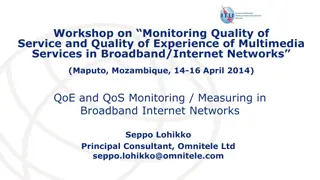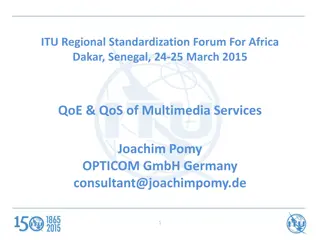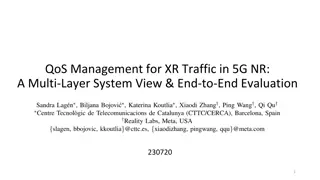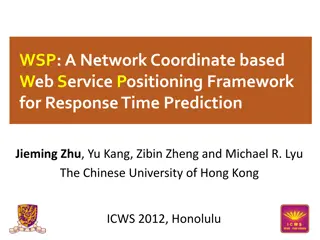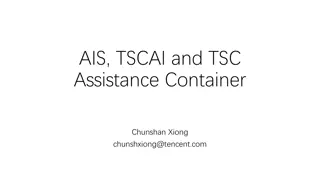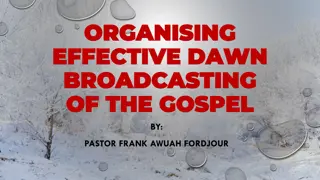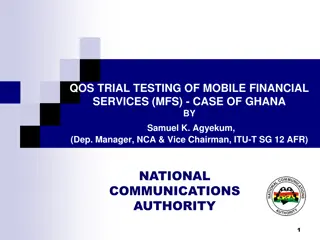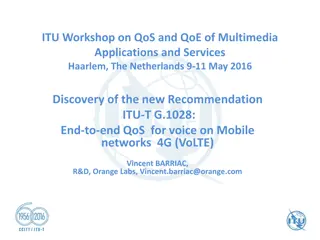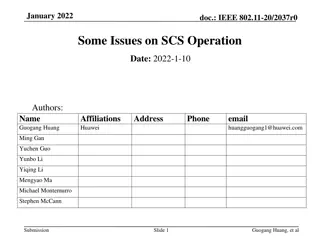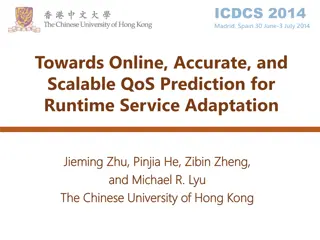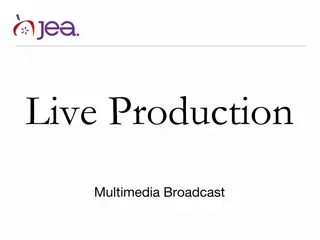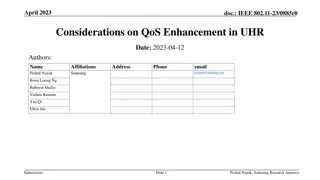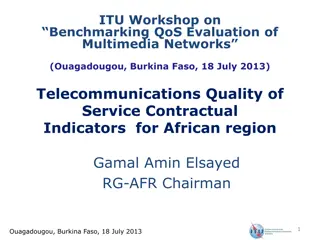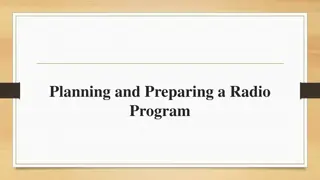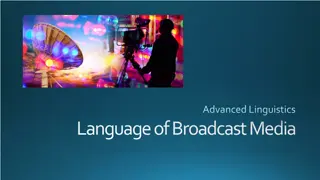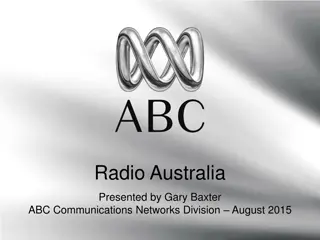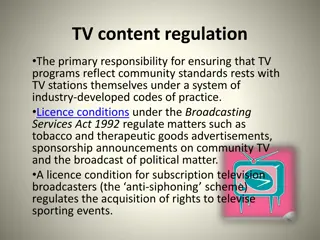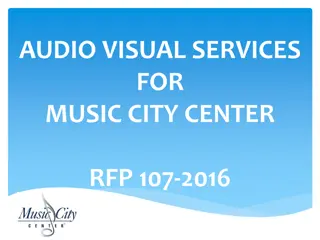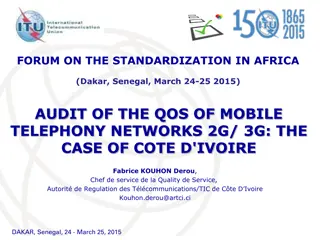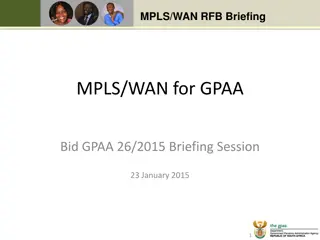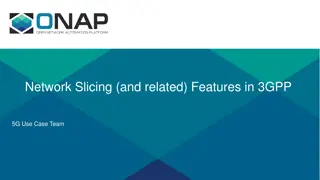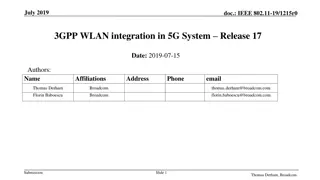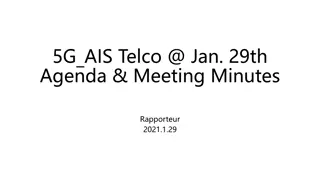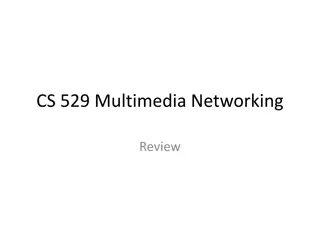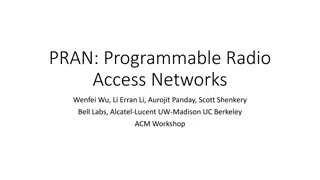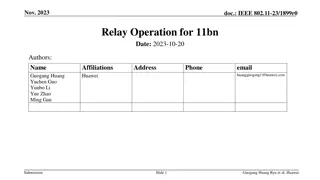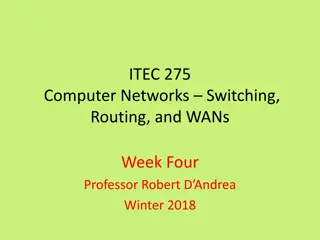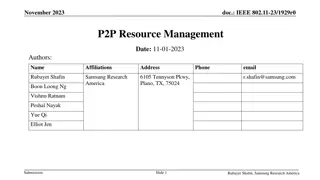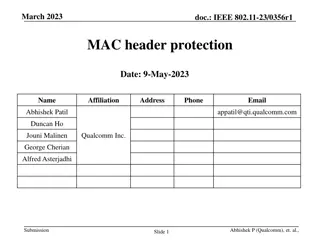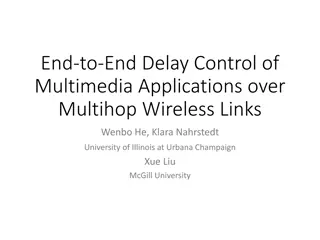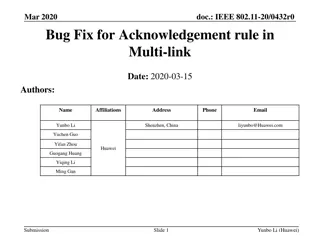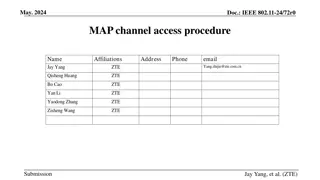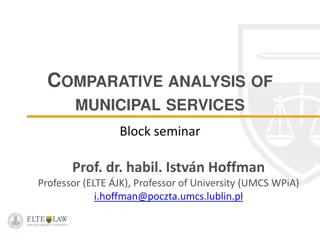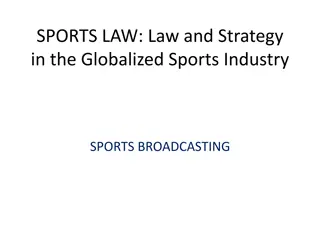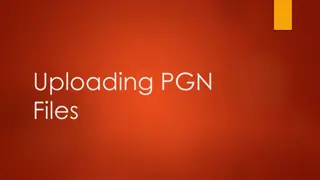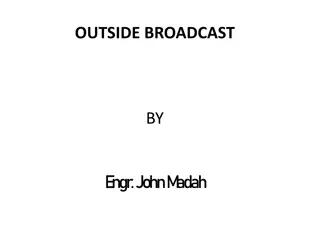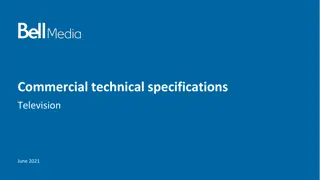Evolution of QoS/QoE in Broadcasting Services
Consumers and regulators are driving the need for established Quality of Service (QoS) and Quality of Experience (QoE) standards in broadcasting services. Stakeholders in Nairobi discussed the importance of ensuring signal quality, video/audio performance, and transmission metrics to meet subscriber expectations. Trends show a demand for improved service levels, prompting organizations like ITU-R Study Group 6 and ETSI DVB to work on assessing and optimizing QoS/QoE. Key metrics like transmission quality are crucial for ensuring a seamless viewing experience and subscriber satisfaction.
Uploaded on Oct 02, 2024 | 0 Views
Download Presentation

Please find below an Image/Link to download the presentation.
The content on the website is provided AS IS for your information and personal use only. It may not be sold, licensed, or shared on other websites without obtaining consent from the author. Download presentation by click this link. If you encounter any issues during the download, it is possible that the publisher has removed the file from their server.
E N D
Presentation Transcript
Stakeholders Forum on Quality of Service and Consumer Experience Nairobi Kenya QoE/QoS for Broadcasting Services 23 25thNovember 2015
QoS/QoE for Broadcasting Services:Is it Necessary? Is there need for an established QoS/QoE for broadcasting services? The subscribers have a right to get a certain standard of subscription service as value for their money; In digital broadcasting regime, broadcasters have their signal carried by broadcast signal distributor (BSD) who needs to guarantee their signal is received and properly decodable; The delivery mechanism for telecommunications and broadcasting are converging (e.g. triple play services), hence broadcasting services will soon begin to face similar quality issues.
Telling Trends Consumers continuously are increasingly demanding certain level of service from their broadcasting service providers; Regulators have begun to require players in broadcasting especially BSDs, and subscription broadcasting service providers to guarantee a certain level of performance. ITU- R Study Group 6 (Broadcasting Services) has begun working towards QoS/QoE for audio and video quality assessment by establishing a Rapporteur Group on Assessment of Video and Audio Quality; Research Organizations like ETSI DVB Measurement Group have made step towards providing an optimized and synthetic metrology, network management and QoS for DVB services these systems also work for other media platforms (including Digital Radio, Mobile TV / multimedia, Broadband TV, HDTV, etc.)
Quality metrics for Broadcasting Services Studies need to be carried on the signal characteristics that guarantee the CPE properly decodes the broadcast signal; Signal quality issues may arise either at the distribution or transmission (over-the-air broadcast) transmission impairments; The video and audio quality must also be such that the viewers would enjoy broadcast services;
Suggested Metrics Transmission Quality ( as specified in ETSI TR 101 290) - the TR recommends a set of syntax and information consistency tests that can be applied to an MPEG Transport Stream (TS) at the parallel interface, or at either of the serial interfaces. These include; Service Availability Error - identifies severe distortions and interruptions of the service under certain receiving conditions and is related to loss of service. Service_Availability_Error = Max[TS_sync_loss( T),PAT_error( T),PMT_error( T)] Service Degradation Error - identifies severe degradation under certain receiving conditions and is related to the level of strong impairments to the service. Service_Degradation_Error = Max[CRC_error( T),PCR_error( T),NIT_error( T),SDT_error( T)] Service Impairments Error identifies first signs of service degradation under certain receiving conditions and is related to infrequent impairments to the service. Service_Impairments_Error = Max[Continuity_count_error( T),Transport_error( T)]
Suggested Metrics MER (for signal from the DVB-T2 Transmitter) BER (for signal from the DVB-T2 Transmitter Overall System Availability (broadcast + Distribution Network), excluding force majeure - 99.5% of the times; Signal Strength what is the minimum signal level for a location to be covered; Sound and Video Quality (except news inserts, historical material, or archival footage, footage originated on non- broadcast format or streaming) needs to meet Grade 4 and above as per ITU-R BT.500 Quality Grading Scale;
Suggested Metrics Billing itemized billing structure; billing error rates; billing complaint lead time; & Refunds; HD Video Quality How much of HD broadcast consists of lower definition material if it has to pass as a HD broadcast? Customer Care Service, complaint resolution and establishment of call centre; Application for subscription/connection lead time Disruption of services for preventive maintenance CPE related issues where the CPE is supplied by the service provider;
Suggested Metrics - Satellite Broadcasts measurements BER before Viterbi decoding - typically ranges from 7 10-2to 10-5. Outside of this range the accuracy of the results may not be guaranteed. BER vs Eb/No measured after Viterbi decoding Receiver BER vs Eb/No Cable Broadcast Measurements Noise Margin/Estimated Noise Margin indicates the reliability of the transmission channel; Signal Quality Margin Equivalent Noise Degradation Margin - is a measure of the implementation loss caused by the network or the equipment where the reference is the ideal performance. BER vs Eb/No Phase Noise of RF Carrier phase noise is normally introduced at the transmitter or receiver due to unstable oscillators. It reduces the systems operating margin (noise margin) and may increase BER. Amplitude, Phase and Impulse Response of the channel - Linear distortions, like amplitude and phase response errors and echoes, will be caused for instance by long lengths of cable and the cascading of a high number of amplifiers. The impulse response is important to localize the discrete reflections that may occur in cable networks. Out of band emission - prevent interference in other channels in the network the RF signal shall comply with the spectrum mask specified for the network under test
Challenges in implementing QoS/QoE in Broadcasting There are also no known industry standards or commonly followed business practices which can be adopted as a model; Lack of or insufficient measurement tools in assessing the quality of broadcasting services; Consumers may not be capable of ascertaining the quality of broadcasting service
Moving Forward . . . Broaden the definition and application of QoS/QoE to include broadcasting services; Regional groups like EACO should initiate studies in Quality of Service for broadcasting services; Gradually introduce the QoS/QoE requirements for broadcasting services.


